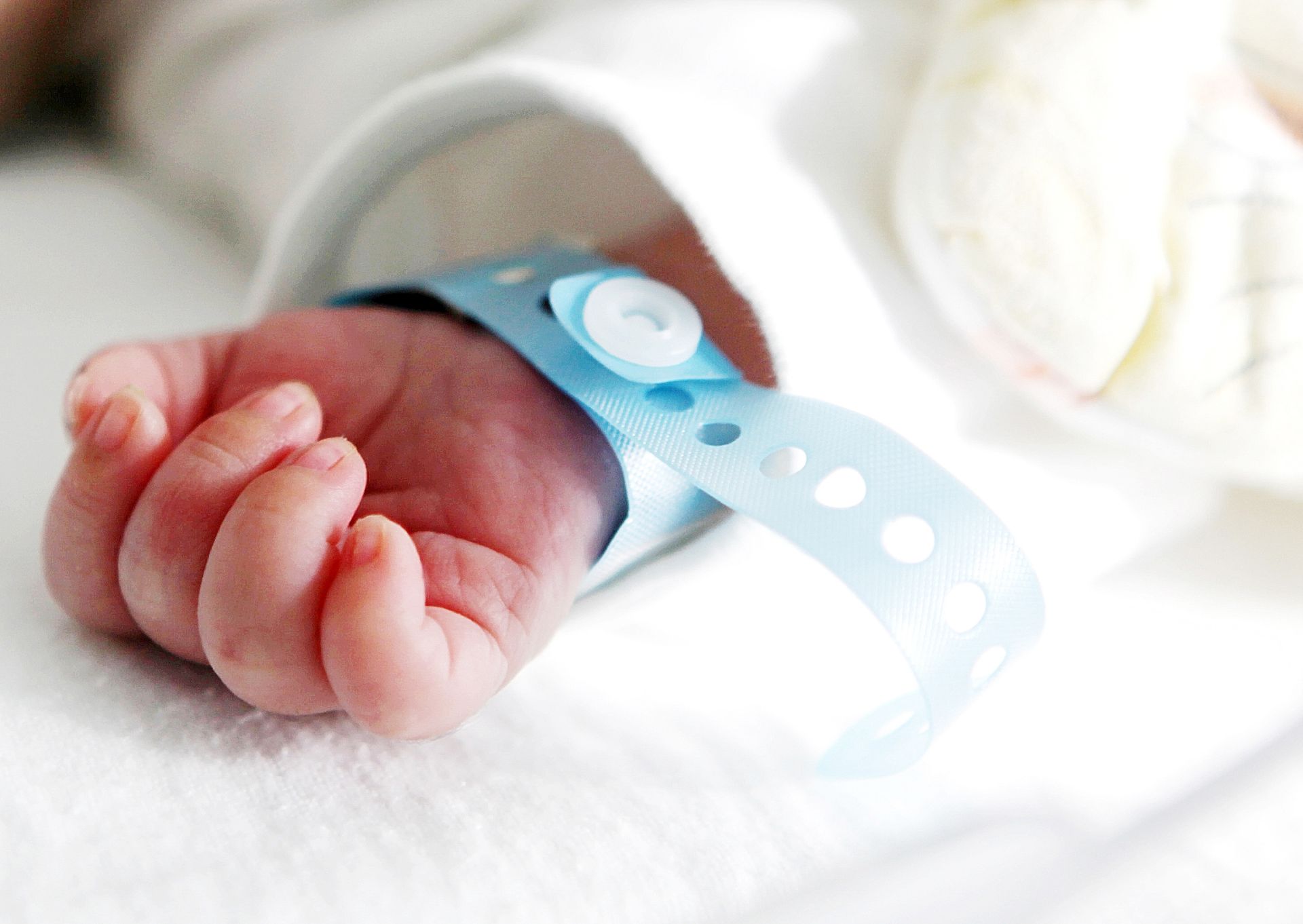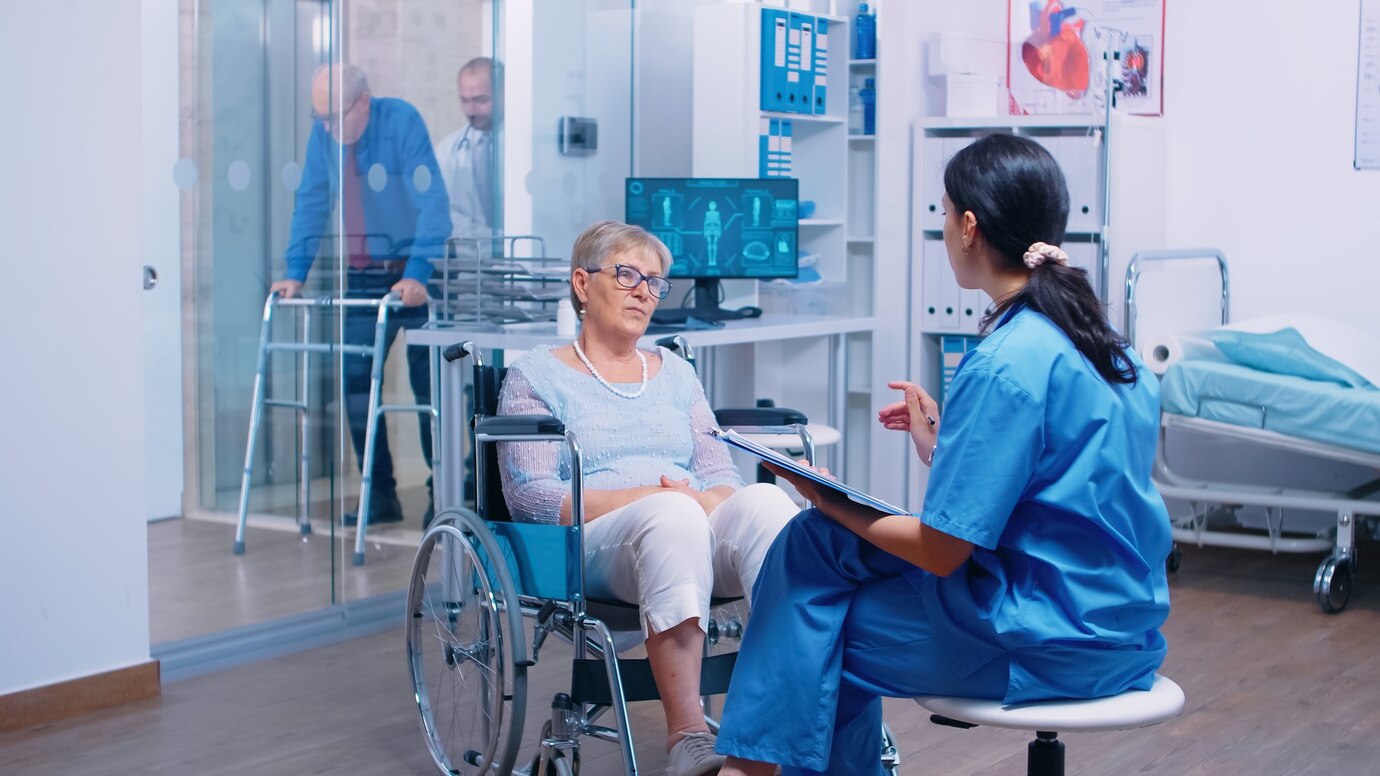
Insightful Survey Findings
Our recent survey on workplace safety and health (WSH) in the healthcare sector found:
- There is heightened awareness of WSH in the healthcare sector, but barriers to reporting workplace incidents and hazards remain a challenge. Fear of punitive actions and heavy workload are the main reasons healthcare employees are not reporting WSH incidents and hazards.
- Psychological hazards due to stress, burnout and fatigue, and workplace aggression and violence are the most under-reported WSH incidents and hazards.
- Most respondents are reporting workplace incidents manually, indicating a need for protected and more effective reporting channels for employees to raise WSH concerns.
- These findings provide strong anecdotal evidence and added impetus for healthcare providers to take targeted measures to improve healthcare worker safety and well-being.
Table of Contents
Background
The purpose of this survey is to gain further insights into the level of awareness of WSH and the reporting of workplace incidents and hazards by healthcare employees. Comprising 5 MCQs, the brief survey aims to highlight work-related safety and health risks, especially those that are prevalent in healthcare settings. It also seeks to identify the barriers that discourage employees from reporting and seeking help.
A total of 76 respondents from hospitals in Southeast Asia and South Asia took part in the survey during a recent regional hospital management conference and via email survey. Survey respondents include hospital leaders, medical directors, CNOs, quality directors, nurses, QA, patient safety managers, pharmacists, and clinicians.
Why is this Important?
WSH incident reporting practices can help us understand occupational safety and health hazards in the workplace, so that we can take the necessary measures to address such vulnerabilities.
Without healthcare worker safety, patient safety will be compromised as both are inseparably connected in practice. Health and safety risks to healthcare workers can lead to risks for patients, patient harm, and adverse patient outcomes. Only when healthcare workers are safe can we keep patients safe and provide health systems with stability and resilience.
Survey Findings
The following are survey highlights:
1. There is a high level of awareness of WSH in the healthcare sector.
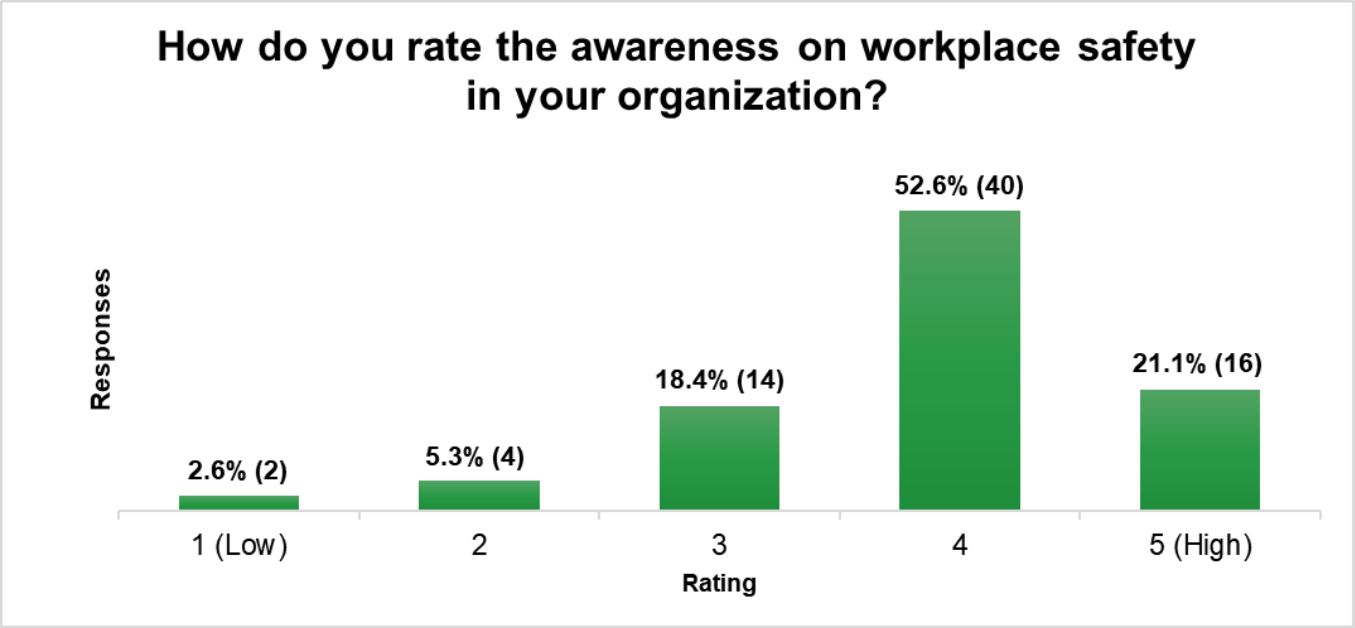
2. Fear of punitive actions (59.2%) and heavy workload (55.3%) are key barriers cited that discourage employees from reporting WSH incidents and hazards.
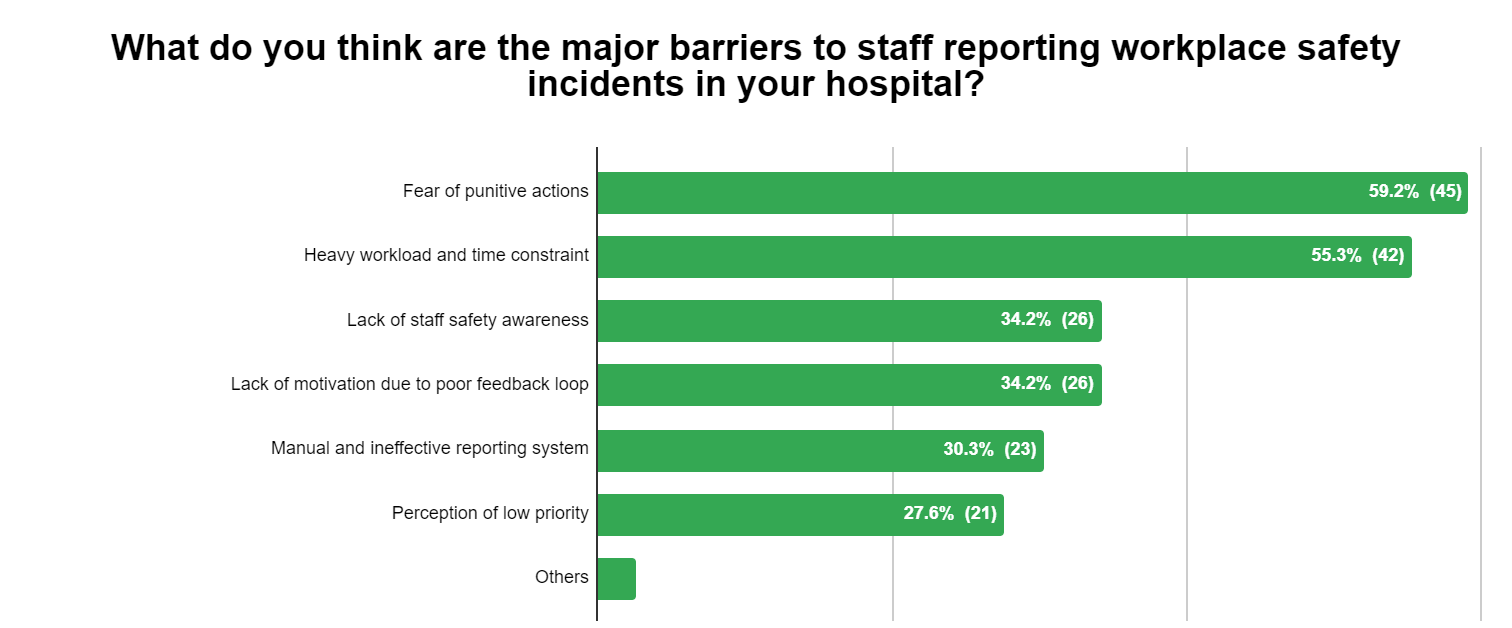
3. Slip, trip, and fall (57.9%) and needlestick and sharp injuries (56.63%) are the most reported workplace injuries.
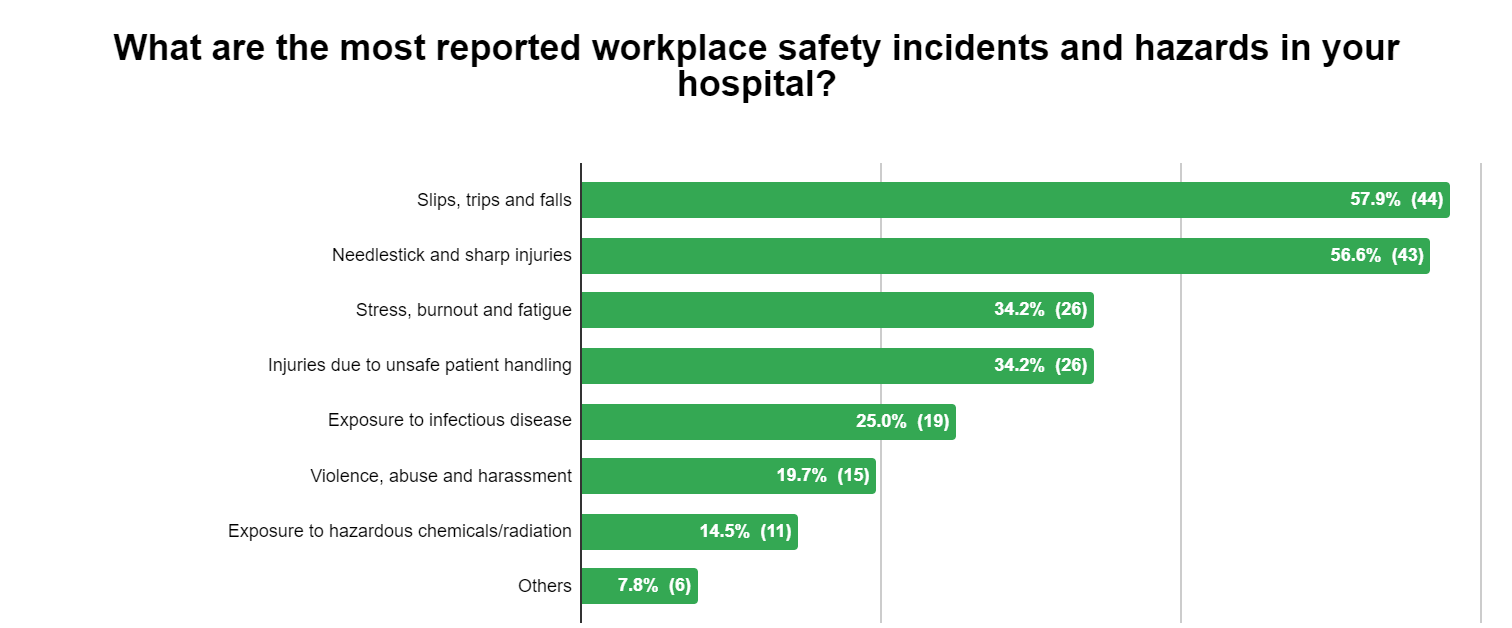
4. Stress, burnout, and fatigue (61.8%), and violence, abuse, and harassment (48.7%) are the most under-reported, followed by injuries due to unsafe patient handling (46.1%).
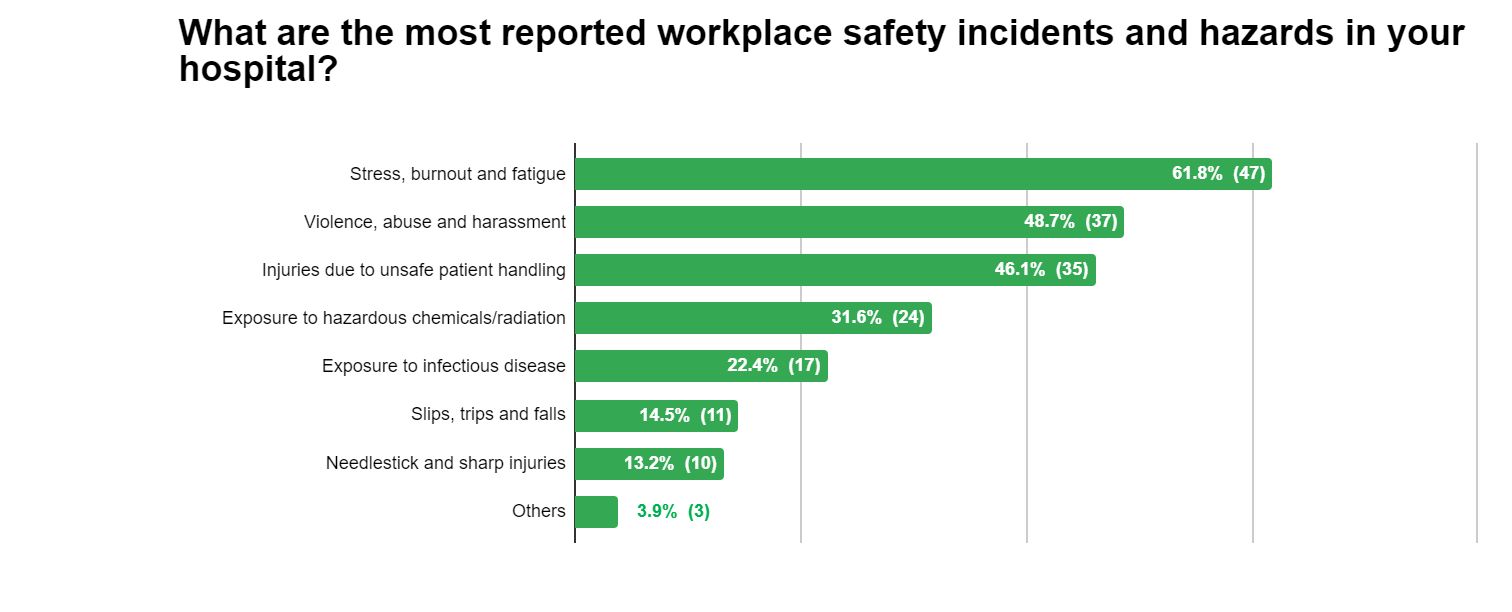
5. 47.4% of respondents report workplace incidents manually (paper-based), 39.5% use an online incident reporting system, and 13.2% use an online form.
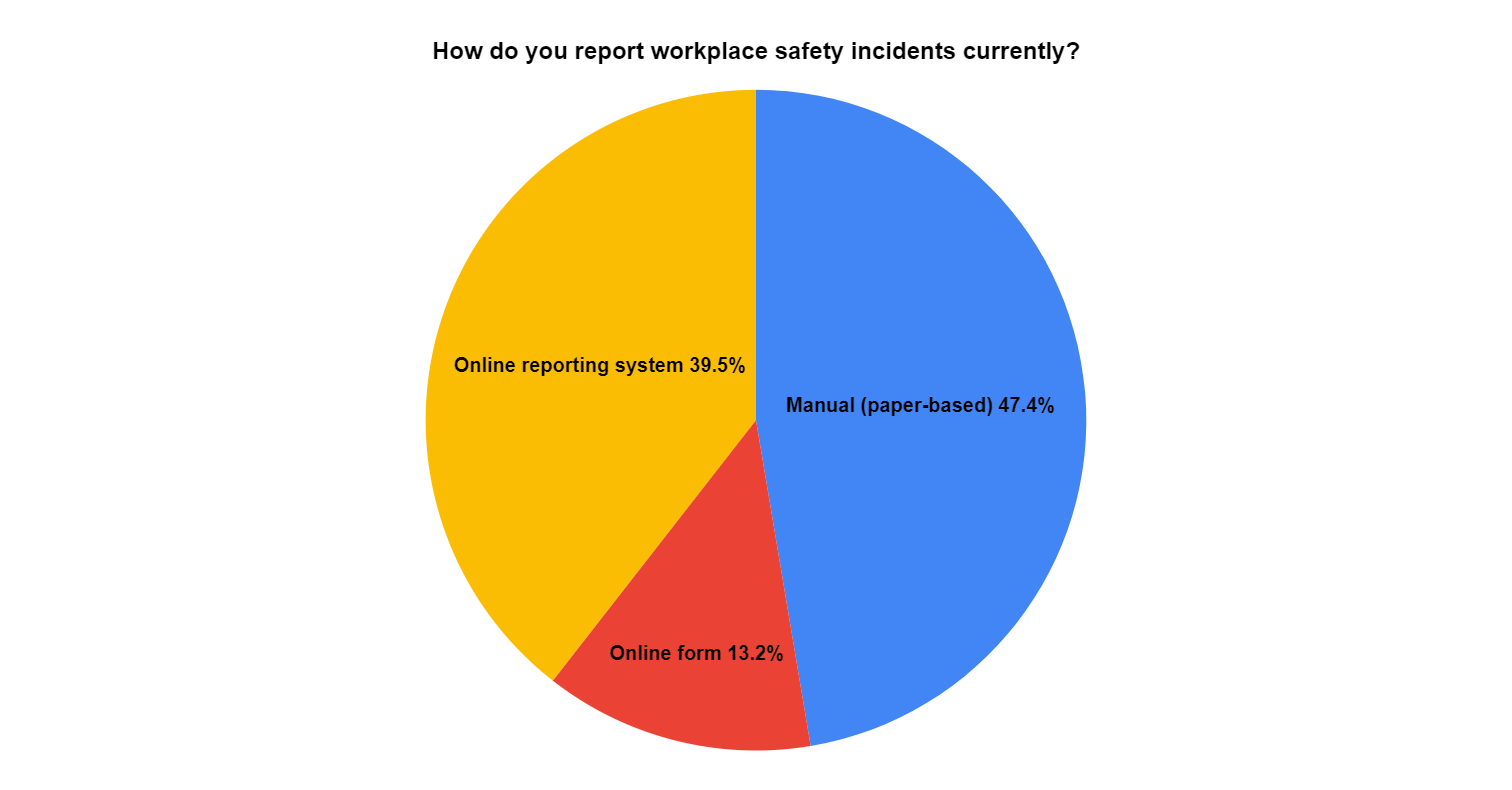
What the Survey Findings Tell Us
The survey results reveal some insightful statistics on the commonly reported as well as the most under-reported injuries and hazards in the workplace. It also identifies the barriers that discourage employees from reporting WSH incidents and hazards.
The 5 key takeaways from the survey are:
- There is heightened awareness of WSH in the healthcare sector, but there are barriers to reporting incidents. The challenge is how to create a set of conditions that encourage employees to speak up, raise safety concerns, and report workplace incidents and hazards without fear.
- Psychological hazards caused by stress, burnout, and fatigue, which can lead to mental health issues, are a major occupational hazard that is the most under-reported.
- Workplace aggression, violence, abuse and harassment against healthcare workers, and injuries due to unsafe patient handling, are also under-reported.
- As expected, slip, trip, and fall, needlestick, and sharp injuries are the most reported occupational injuries among healthcare workers.
- Most respondents are reporting incidents manually or using online forms. Many hospitals are yet to digitalize and automate incident and near-miss reporting processes.
Recommendations
The survey findings provide anecdotal evidence and impetus for healthcare providers to take urgent actions to ensure a safe and healthy work environment for all employees. The following are recommendations to address WSH issues identified in the survey findings:
- Creating a culture of safety in the workplace. Promote a blame-free and just working culture through open communication. Give equal priority to healthcare worker safety and take an integrated approach to managing patient safety, healthcare worker safety, and quality improvement initiatives. Healthcare leaders to lead by example.
- Addressing mental health and psychological well-being issues. Maintain appropriate staffing levels, working hours, and rest breaks. Emphasize staff mental health. Provide employees access to mental well-being counselling and psychological support. Minimize the administrative workload of healthcare workers through automation. Establish appropriate channels and mechanisms for staff to seek help.
- Protecting healthcare workers from violence at work. Implement policies and guidelines such as zero tolerance of violence against healthcare workers. Establish helplines and anonymous reporting of such incidents. Render support to any healthcare workers facing violent behaviours.
- Protecting healthcare workers from physical, ergonomic, and other hazards. Implement a set of WSH standards including fall-prevention measures in all healthcare facilities. Ensure the availability of PPE and undertake adequate safety training for all staff. Provide ergonomically designed equipment and assistive devices to behaviours musculoskeletal injuries and falls.
- Implementing an online incident reporting system. Making incident reporting easy and purposeful is a key foundation to building a safety culture that encourages open communication. Automating incident management processes will reduce staff workload, raise efficiency, and enable effective management of workplace incidents and hazards.
Contact us to find out how QUASR makes WSH incident reporting easy, meaningful, and effective.




